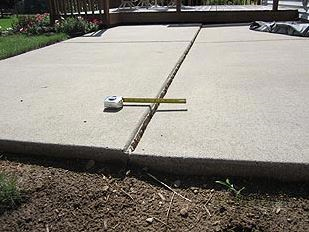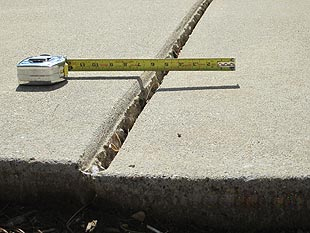 Thank you for considering Two Ducks Concrete for your residential concrete project! We look forward to working with you.
Thank you for considering Two Ducks Concrete for your residential concrete project! We look forward to working with you.
The following is important information that may be helpful during the bidding and concrete construction process. For more information, or to Free Estimate from our concrete contractors in Battle Creek MI, call (269) 963-6263.
What You Should Know About Our Services
Learn about the following topics below:
Concrete Mix
Our concrete contractors in use a six-bag limestone mix for exterior concrete. There are six 94-pound bags of cement (powder) in every cubic yard of concrete, which results in a strong creamy mix that’s easy to finish.
Limestone is used as the aggregate in the concrete mix because it doesn’t absorb moisture as readily as less dense stones, reducing the risk of popping. Less dense stones would absorb moisture, freeze in cold temperatures, expand, and pop the surface layer of finished concrete.
We use a six-bag limestone mix in all exterior work, including garages and pole barns. However, since basement floors have an ambient temperature that stays above freezing, we use an alternate mix design.
Control and Expansion Joints
Control joints are either saw-cut or groove-tooled into the . We do this to place the joints in such a way as to allow the concrete to crack in the joint, remaining unseen. For example, 4” thick concrete joints are typically placed on approximately 10’ centers and 6” thick concrete joints on 15’ centers.
Our concrete contractors in Battle Creek MI do their best to place the joints to avoid random cracks. However, random cracks will occasionally occur when the force exceeds the strength of the concrete. Heavy loads will also crack your concrete driveway, stamped concrete patio, or another paved surface.
Most cracks are caused by upward pressure from frost. The moisture trapped in soil expands as it freezes, building tremendous upwards pressure from below. Areas with heavy expansive soil (like clay) are the worst since clay holds more moisture than sand or gravel. Once clay freezes, it expands and pushes up on the concrete, potentially cracking your concrete.
If you have heavy clay, we will offer to remove it and replace it with 4” to 8” of granular fill under the new concrete. Random cracks, though unsightly, do not affect the structural integrity of the slab. No one in the concrete business (us included) can guarantee your concrete will not crack.
Expansion joints consist of 1/2” wide semi-rigid material that allows the concrete to expand and contract with temperature changes. It also prevents concrete from bonding to structures, such as building foundations. Foundations, being below the frost line, will not move when the ground freezes. Slabs on grade must be allowed to move with any ground movement. Usually, concrete slabs heave when the ground freezes and settle back into place once the weather warms.
If a slab on grade is not allowed to move, upward pressure from frost will typically crack the concrete two to three feet from the foundation. In situations where the concrete cannot be allowed to heave, we will pin the concrete to the foundation and place a control joint two to three feet from the foundation to make it crack where it will anyway.
Reinforcement
Fiber Mesh: Unless directed otherwise, we include wire and fiber mesh in all of our work. (Fiber mesh only in basement floors.) Fiber mesh is polypropylene fibers, approximately 1” long and about the diameter of coarse dog hair. (Think short pieces of fishing line). Fiber mesh basically consists of adding 1 to 1 ½ lb. of fibers to each cubic yard of concrete. It is put in the ready-mix truck at batching.
Fiber mesh is a great deterrent to random cracking. However, once the concrete cracks, fiber mesh does nothing to hold the concrete together. One pound of fishing line cannot be expected to reinforce 4,000 lbs. (one cubic yard) of concrete. We typically place saw-cut control joints in the concrete to make it crack in the joint. Over time and several freeze-thaw cycles, the concrete is likely to separate at the joints if no other reinforcement is used. In driveways with fiber mesh only, we have seen as much as 5/8” separation within 5 years.
Wire Mesh: In all of our work, other than basement floors, we include wire mesh. Typically, in 4” concrete, we use 6x6x10 woven wire mesh. That means 6”x6” squares by 10 gauge wire diameters. Wire mesh aids in the prevention of random cracks, but, more importantly, keeps the concrete together when it does crack. (Remember, we cut joints in the concrete so it will crack.) The concrete can move up and down with freeze-thaw cycles but it cannot separate or shift.
Below is an example of what happens when exterior concrete is poured without wire mesh reinforcement. The two photos show a small concrete patio that was poured in 1998 – only 14 years ago when the house was built. As the photos clearly show, the concrete has shifted and settled to a point where the patio is unusable.


